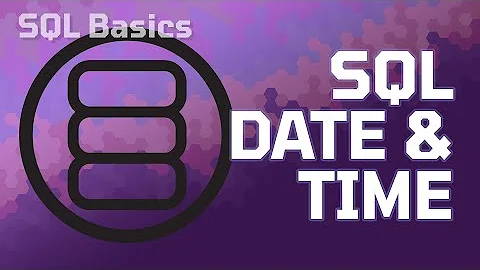Creating date in SQL Server 2008
Solution 1
Using the 3 from your example, you could do this:
dateadd(dd, 3 -1, dateadd(mm, datediff(mm,0, current_timestamp), 0))
It works by finding the number of months since the epoch date, adding those months back to the epoch date, and then adding the desired number of days to that prior result. It sounds complicated, but it's built on what was the canonical way to truncate dates prior to the Date (not DateTime) type added to Sql Server 2008.
You're probably going to see other answers here suggesting building date strings. I urge you to avoid suggestions to use strings. Using strings is likely to be much slower, and there are some potential pitfalls with alternative date collations/formats.
Solution 2
You could use something like this to make your own datetime:
DECLARE @year INT = 2012
DECLARE @month INT = 12
DECLARE @day INT = 25
SELECT CAST(CONVERT(VARCHAR, @year) + '-' + CONVERT(VARCHAR, @month) + '-' + CONVERT(VARCHAR, @day)
AS DATETIME)
Solution 3
CREATE FUNCTION DATEFROMPARTS
(
@year int,
@month int,
@day int
)
RETURNS datetime
AS
BEGIN
declare @d datetime
select @d = CAST(CONVERT(VARCHAR, @year) + '-' + CONVERT(VARCHAR, @month) + '-' + CONVERT(VARCHAR, @day) AS DATETIME)
RETURN @d
END
GO
Related videos on Youtube
Jaiesh_bhai
Updated on December 12, 2021Comments
-
Jaiesh_bhai over 2 years
Is there something similar to
DATEFROMPARTS(year, month, day)in SQL Server 2008? I want to create a date using the current year and month, but my own day of the month. This needs to be done in one line in order to be used in a computed column formula.For Example (I'm not sure if it works because I do not have SQL Server 2012):
DATEFROMPARTS(YEAR(GETDATE()), MONTH(GETDATE()), 3)Is there a way to do this in SQL Server 2008?
DATEFROMPARTS Seems only available in SQL Server 2012 (link)
-
 T I over 10 yearspossible duplicate of Create a date with T-SQL
T I over 10 yearspossible duplicate of Create a date with T-SQL -
Jaiesh_bhai over 10 yearsI saw that answer, can that be used inside a computed column formula?
-
 Martin Smith over 10 years@Jaiesh_bhai - A persisted or non persisted computed column?
Martin Smith over 10 years@Jaiesh_bhai - A persisted or non persisted computed column? -
Jaiesh_bhai over 10 years@MartinSmith non persisted
-
-
Joel Coehoorn over 10 years@MartinSmith Thanks, fixed :o Forgot for a moment that I'd be adding the days to a 1 instead of a 0.
-
Jaiesh_bhai over 10 yearsThere seems to be a syntax error somewhere, I don't see a syntax error after the edits that have been made.
Msg 102, Level 15, State 1, Line 1 Incorrect syntax near 'dd'. -
Joel Coehoorn over 10 years@Jaiesh_bhai I was also missing a closing parentheses at one point. If I put a
selectin front of what's there now and paste it directly into a query window in Management Studio, I get2013-10-03 00:00:00.000if I run it right now. -
Jaiesh_bhai over 10 yearsOh okay! Thanks that was dumb of me. I forgot the
SELECT. This is exactly what I am looking for. -
MDV2000 about 5 yearsRan into this today with a client on an old version of sql and this worked like a champ!
-
 levininja over 4 yearsIt would probably be less error-prone to convert the year to CHAR(4) and the month and day to CHAR(2). In your example you have them hardcoded but in normal use those could be coming from somewhere else and it could cause problems if these parameters weren't the expected length.
levininja over 4 yearsIt would probably be less error-prone to convert the year to CHAR(4) and the month and day to CHAR(2). In your example you have them hardcoded but in normal use those could be coming from somewhere else and it could cause problems if these parameters weren't the expected length. -
 Admin over 2 yearsAs it’s currently written, your answer is unclear. Please edit to add additional details that will help others understand how this addresses the question asked. You can find more information on how to write good answers in the help center.
Admin over 2 yearsAs it’s currently written, your answer is unclear. Please edit to add additional details that will help others understand how this addresses the question asked. You can find more information on how to write good answers in the help center.







